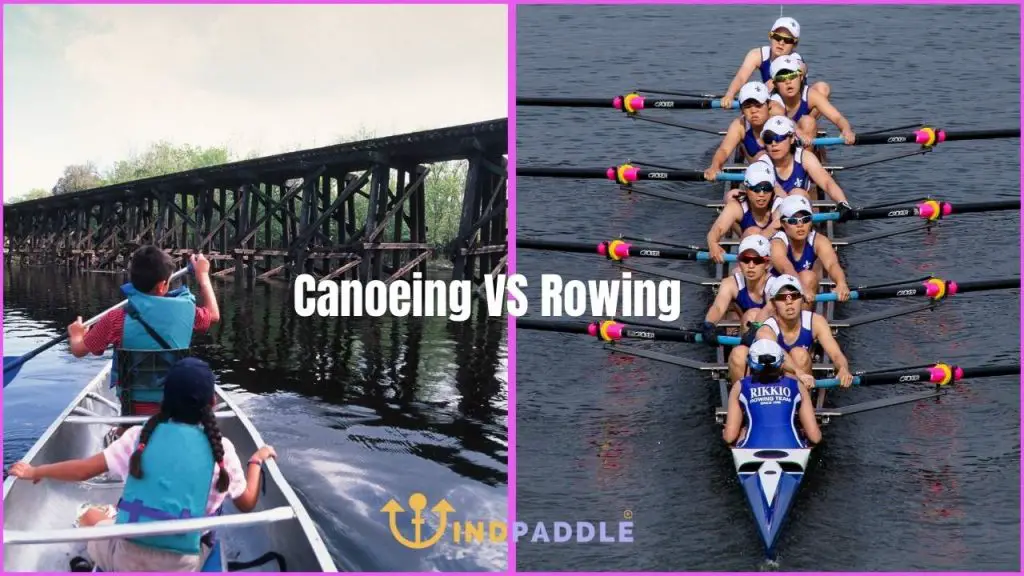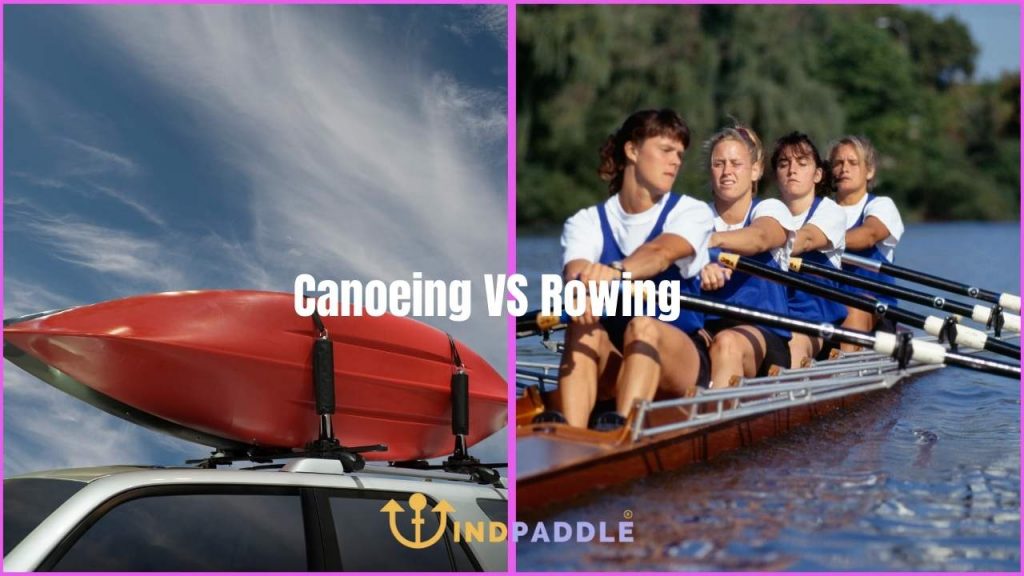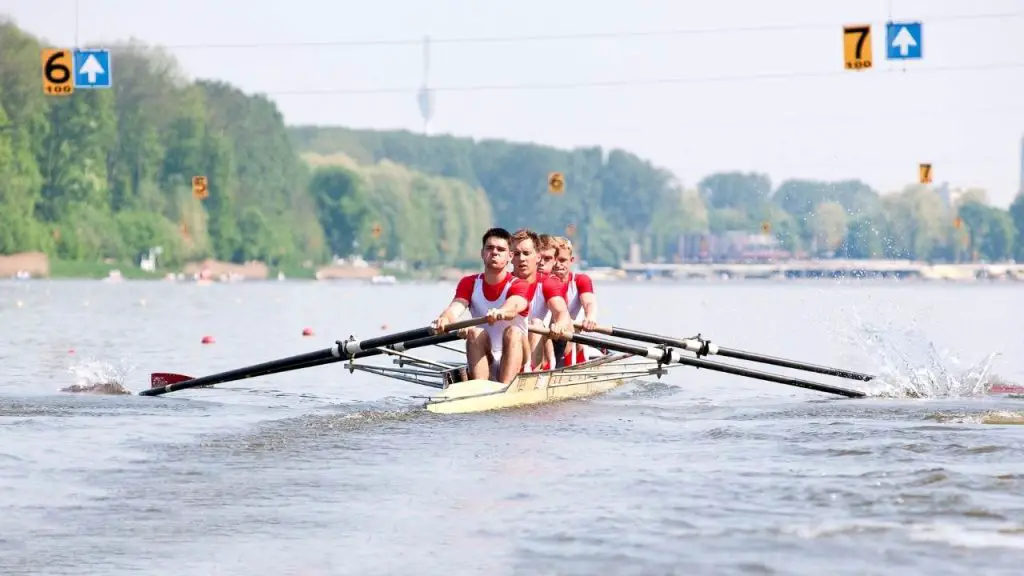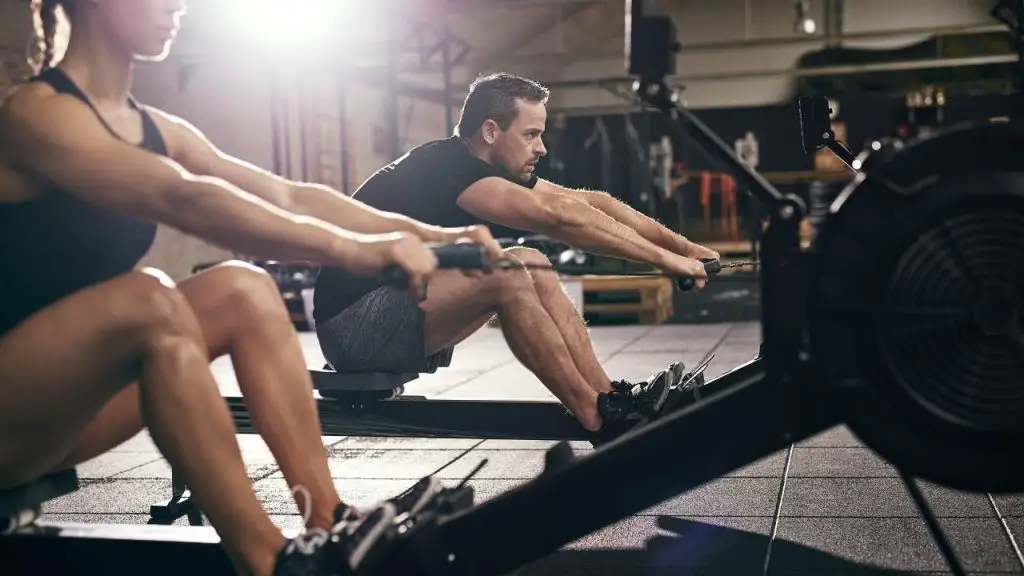Canoeing and rowing are two popular water sports that share some similarities but also have some key differences. Both canoeing and rowing require the use of oars to propel the boat through the water, and both can be done for recreation or competition.
However, there are some key ways in which canoeing and rowing differ. Canoeing is typically done in a lighter, narrower boat than rowing, and can be done solo or with a partner. Rowing is usually done in a larger boat with a team of people and requires more coordination between rowers.
So, what are the main similarities and differences between canoeing and rowing? Keep reading to find out!
Table of Contents
Similarities of Canoeing and rowing

Canoeing and rowing are both water sports that use long, narrowboats propelled by oars.
Both canoeing and rowing can be done for recreation or competition. The main difference between canoeing and rowing is that canoeing is typically done in a small boat for one or two people while rowing is done in a larger boat with a team of people. Canoeing is also often done in calm waters while rowing may be done in rougher waters.
Both canoeing and rowing require good upper body strength and stamina, as well as coordination and balance.
Differences between Canoeing and Rowing
Somebody will miss out on the main differences:
- Canoeing is done in a small boat while rowing is done in a large boat
- Canoeing can be done solo or with a partner while rowing must be done with a team
- Canoeing is often done in calm waters while rowing may be done in rougher waters.
- Canoeing requires good upper body strength, stamina, coordination and balance while rowing also requires leg strength.
Now, let’s dive into detail about the differences.

1. Canoeing is done in a small boat while rowing is done in a large boat
When we say small boat, that is a boat that is small enough to be carried or towed by a car while a large boat is a boat that is too big to be carried or towed by a car”
The boat used for canoeing is typically lighter and narrower than the boat used for rowing.
2. Canoeing can be done solo or with a partner while rowing must be done with a team.
You can solo canoeing but can’t do it in rowing. Rowing requires at least two people in order to propel the boat through the water. Canoeing is a much more relaxing activity, while rowing can be quite strenuous.
3. Canoeing is often done in calm waters while rowing may be done in rougher waters.

Calm waters are defined as being free from choppy or disturbed conditions, making them ideal for canoeing and rowing. Canoeists and rowers often seek out calm waters to enjoy their chosen activity in peace and tranquility. However, there can be advantages and disadvantages to both canoeing and rowing in calm waters.
Canoeing in calm waters can be a very relaxing experience. The gentle movement of the canoe through the water can be soothing, and the scenery can be beautiful. Canoeists can take their time and enjoy the surroundings without having to worry about waves or other disturbances.
However, there are some drawbacks to canoeing in calm waters. First, it can be difficult to paddle a canoe in very calm conditions. The lack of movement can make it hard to keep the canoe going in a straight line. Second, canoeists may become bored quickly when there is nothing but calm water to look at.
Rowing in calm waters can also be enjoyable. The rhythmic motion of rowing can be calming, and rowers can cover a lot of ground quickly if they want to. Rowing is also a great workout, and it can be very satisfying to move the boat smoothly through the water.
However, there are some downsides to rowing in calm waters as well. First, rowers can get very hot and sweaty since they are working hard with little wind resistance. Second, rowers may become frustrated because it can be difficult to row in a straight line when there is no current or wave action to help.

Rougher waters are defined as being choppier or more disturbed than calm waters. This can make them more challenging and exciting for canoeists and rowers, but it can also be more dangerous.
Canoeing in rougher waters can be a thrilling experience. The waves and currents can provide a challenge for even experienced canoeists, and the scenery is often more interesting in rougher conditions. Canoeing in rougher waters can also be very exhilarating, and many people enjoy the adrenaline rush that comes with it.
However, there are some serious dangers to canoeing in rougher waters. First, the waves and currents can capsize a canoe if the canoeist is not careful. Second, there is a greater risk of collision with other boats or objects in rougher waters. Finally, the weather can be more unpredictable in rougher waters, and storms can quickly develop.
Rowing in rougher waters can also be exciting. The waves and currents can provide a challenge for even experienced rowers, and the scenery is often more interesting in rougher conditions. Rowing in rougher waters can also be very exhilarating, and many people enjoy the adrenaline rush that comes with it.
4. Canoeing requires good upper body strength, stamina, coordination and balance while rowing also requires leg strength.
Rowing requires leg strength because rowers use their legs to power the boat through the water.

The legs are the largest and strongest muscles in the body, so they are essential for rowing.
Good leg strength is necessary for generating the power needed to move the boat quickly. Additionally, leg strength is important for maintaining good technique while rowing.
Proper technique involves using the legs, back, and arms to generate power, and strong legs are essential for executing this technique correctly.
Finally, leg strength is important for preventing injuries while rowing.
Strong legs help to stabilize the body and protect the joints from impact.
Canoeing also requires good upper body strength, stamina, coordination, and balance.
Canoeists need strong arms to paddle the boat and navigate through the water.
They also need good stamina to paddle for long periods of time, and good coordination to steer the canoe. Canoeists also need to be able to maintain their balance while paddling, which can be difficult in rough waters.
FAQs
Is rowing harder than canoeing?
They are both physically demanding activities that require many skills and techniques. Some people may find canoeing to be more difficult than rowing, while others may find rowing to be more difficult. Ultimately, it is up to the individual to decide which activity is more difficult.
Is canoeing or rowing faster?
The speed of canoeing and rowing depends on a variety of factors, such as the type of boat, the skill of the canoeist or rower, and the strength of the wind. In general, though, canoeing is typically slower than rowing.
Is canoeing or rowing more difficult?
This is also a difficult question to answer definitively. Canoeing and rowing are both challenging activities that require skill and practice. Some people may find one more difficult than the other, but it really depends on the individual.
Can you paddle a canoe in rougher waters?
Yes, but rougher waters can be more dangerous for canoeists. The waves and currents can capsize a canoe if the canoeist is not careful, and there is a greater risk of collision with other boats or objects in rougher waters. Additionally, the weather can be more unpredictable in rougher waters, so storms can develop quickly.
Conclusion
So, those are some of the key similarities and differences between canoeing and rowing! If you’re looking for a solo or partner water sport that can be done in calm waters, canoeing may be the activity for you.
If you’re looking to row with a team in rougher waters, rowing may be the better option. Whichever you choose, you’re sure to get a great workout and have some fun on the water!


2 thoughts on “Canoeing vs Rowing: Similarity and Differences”